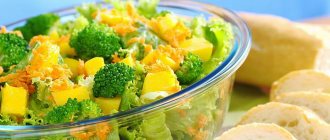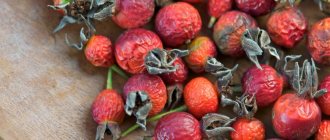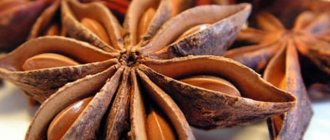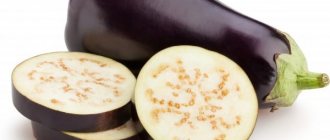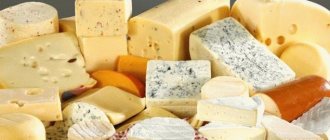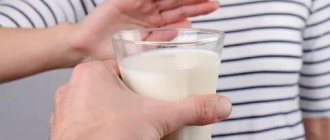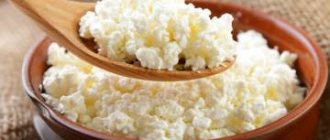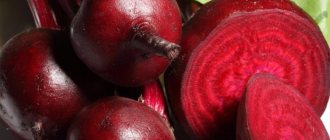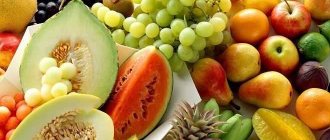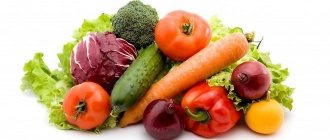Disorders in the digestive system, such as inflammation of the pancreas and gallbladder, in their treatment require strict restriction of foods that can provoke an exacerbation.
Many patients, trying to expand their diet, ask the question “is it possible to eat eggplants with pancreatitis and cholecystitis.”
This vegetable crop is quite widely used in various culinary dishes and in medicinal therapies; it is a member of the nightshade family. In the East, it is called the “vegetable of longevity” for its numerous taste and healing qualities.
Is it possible to eat eggplants with pancreatitis?
The consumption of these purple vegetables for pancreatitis is allowed only during the remission stage. During an exacerbation of the disease, such food is strictly prohibited.
Doctors recommend that patients who have had inflammation of the pancreas gradually return eggplant dishes to their diet. This tasty and healthy product is included in the menu after final rehabilitation, when stable remission occurs.
Chemical composition
Eggplant, or nightshade, has a rich composition that makes it healthy. Fleshy fruits are rich in macro- and microelements (potassium, phosphorus, calcium, sulfur, magnesium, sodium, iron, zinc, iodine, selenium).
The product contains essential and non-essential amino acids, a number of polyphenols, in particular chlorogenic acid.
The fruits, covered with a dark glossy peel, have a high content of anthocyanins - substances with antioxidant, anti-inflammatory, bactericidal, antispasmodic properties.
Nightshade contains a lot of fiber, which is necessary for the normal functioning of the digestive process.
Eggplant is a storehouse of vitamins. He is rich:
- choline;
- ascorbic acid;
- nicotinic acid;
- niacin;
- pyridoxine;
- tocopherol;
- riboflavin;
- thiamine;
- carotene;
- folic acid;
- phylloquinone;
- retinol.
The nutritional value
Eggplant is a low-calorie product: 100 g of vegetable contains only 24 kcal.
In the composition of fleshy fruits:
- 5.5 g carbohydrates;
- 0.6 g proteins;
- 0.2 g organic acids;
- 0.1 g fat.
Points for and against
The undoubted advantages of the vegetable are its beneficial properties for humans and its pleasant taste.
However, phytoncides and alkaloids contained in eggplants can aggravate the inflammatory process in pancreatitis. If the fruits are prepared correctly, they can be included in the patient’s diet.
Useful properties of eggplant
Eggplants are healthy and tasty vegetables. Their regular consumption has a positive effect on human health.
The beneficial properties of the culture include:
- normalization of the lipid spectrum - prevention of the formation of blood clots in blood vessels;
- improvement of the general condition of the heart: pressure, rhythm, - normalization of contractile function;
- removal of uric acid salts;
- removing toxins from the body.
Vegetables activate the motility of the gallbladder and bile ducts, reduce weight and improve hematopoiesis in the bone marrow. They improve metabolism due to a large amount of vitamins: A, B, E, C, and PP.
Eggplant is enriched with microelements:
- potassium;
- iodine;
- magnesium;
- phosphorus;
- copper;
- aluminum
The fruits contain a minimal amount of fat and carbohydrates, so they are consumed by people with diabetes or atherosclerosis. Doctors recommend adding eggplant to your diet if you have liver problems: it reduces swelling.
Vegetable culture increases the overall tone of the body. It contains fiber, which helps fight dysbiosis and normalizes intestinal microflora.
For diseases of the digestive tract, follow a diet selected by a doctor. Eggplants for pancreatitis are permitted products, but the form and degree of the disease are taken into account.
The benefits and harms of eggplants for illness
If the product is well tolerated, it has a positive effect on the body:
- reduces the amount of bad cholesterol;
- strengthens the myocardium, normalizes heart rhythm;
- improves hematopoiesis;
- has a diuretic effect;
- removes urates;
- improves intestinal motility, relieves constipation.
The most beneficial properties are observed in young fruits. Overripe eggplants contain harmful solanine.
When consumed regularly, eggplants prevent inflammation in the pancreas and cleanse the organ of toxins.
With acute pancreatitis, do not eat vegetables, as they:
- increase bile secretion, which, with discoordinated operation of the valve apparatus, leads to the entry of bile components into the pancreatic ducts;
- have a high fiber content, which causes diarrhea and flatulence in patients with pancreatitis;
- promote active production of pancreatic enzyme in the stomach, aggravating inflammation of the pancreas;
- contain a large amount of sugars, which increase the load on the endocrine apparatus of the inflamed gland.
What are the benefits of a vegetable?
Eggplant (blue) is 90% water. At the same time, the fruit is not rich in fats, sugar, carbohydrates and acid. The mineral components that make up the vegetable make up almost its entire volume. It contains iodine, potassium, magnesium, phosphorus, zinc, iron, copper and fluorine. The fruit contains B vitamins (B1, B6 and B9), which treat headaches and insomnia. Vitamin C provides effective prevention of influenza and respiratory diseases. The little blue ones also contain vitamins A and PP.
Eggplants during exacerbation of pancreatitis
The inclusion of vegetable dishes in the menu of a patient with acute pancreatitis is unacceptable. The fruits contain alkaloids, phytoncides, and ascorbic acid, which aggravate the inflammatory process, cause deterioration in health, and increase pain.
Reference. Eggplant in acute pancreatitis can provoke pancreatic necrosis. This is a dangerous condition in which defense mechanisms are disrupted and the diseased organ begins to digest itself.
In chronic form
In a state of remission, when the disease manifests itself as a significant weakening or disappearance of unpleasant symptoms, eating fleshy fruits is harmless. Eggplant dishes are returned to the diet carefully and gradually, following the doctor’s dietary recommendations.
For cholecystitis
If you have inflammation of the gallbladder, use eggplants with caution. During periods of exacerbation of the disease, the product is excluded from the diet.
In a state of remission of cholecystitis, vegetable dishes do not harm a person.
How much can you eat
If we talk about the possible acceptable norms of consumption of these fruits per day, then the maximum daily dose is considered to be only that which is adequately tolerated by the body of each individual patient. In this case, it is impossible to talk about any specific figure or volume.
Like any other disease, pancreatitis can be expected in different manifestations, and in completely different ways. If its acute form occurs, then it involves the use of certain medications and a fundamental change in views on the patient’s eating behavior and diet. Here you will need complete information, in addition, you need to know how to relieve an attack of pancreatitis if it happens.
During the period of recovery or stable remission, one must not deviate from maintaining a healthy lifestyle and a high-quality diet aimed at relieving the load on the digestive organ affected by inflammation.
The most useful foods for a weakened pancreas are vegetables. When consuming them, it is important not to forget that vegetables can bring both benefit and harm to the body. In this case, eggplants cannot be called an exception to the indisputable dietary rule.
Rules of use and norms for pancreatitis
They begin to add eggplant dishes to the menu gradually, in small portions, calculating the amount individually for each patient.
Attention! It is undesirable to use overripe fruits due to the solanine they contain. On the eve of cooking, vegetables are soaked in salt water to eliminate this substance.
Eggplant varieties with light skin and pulp that is not prone to darkening are suitable for inclusion in the diet of a person suffering from chronic pancreatitis.
A healthy adult is recommended to consume no more than 200 g of vegetables per day, and a child over 5 years old - 100 g.
A few simple diet recipes
All recipes are based on the fact that the food will be boiled, stewed or baked, but in no case fried in large amounts of oil. Recommended meat components for dishes include rabbit, chicken, turkey, and if pork, then the balyk part.
Before cooking, the blue vegetable is soaked in salted water to remove the bitterness, or the skin is removed altogether.
Eggplant stuffed with meat:
- three young fruits are cut into two or three parts, the pulp is cleaned out;
- in a separate frying pan, stew chopped eggplant pulp, 1 peeled tomato, a little onion and 400g. minced meat;
- The vegetable halves are stuffed and placed in the oven for 40 minutes until cooked.
Using this fruit you can also prepare many different variations of rolls:
- cut the fruits into slices;
- bake on a baking sheet or frying pan over low heat;
- Bake the plates on one side only.
You can wrap lean meat, carrot salad, tomatoes, and even fish in the prepared base.
Such simple recipes will make your menu more rich.
In what form is it better to eat eggplants: recommendations and recipes
They begin to include eggplants in the patient’s diet with puree soup. If after this the person’s condition does not worsen, vegetables are added stewed or baked.
People suffering from pancreatitis should not eat fried foods or foods high in fat.
Eggplant caviar
Eggplant caviar is allowed for patients with pancreatitis and cholecystitis. It’s easy to prepare:
- Select young vegetables with elastic skin.
- They are cut into pieces and soaked in saline solution. The peel is pre-cut.
- The pieces are boiled or baked in the oven, then crushed in a blender.
- The resulting mass is salted and a small amount of vegetable oil is added.
It is permissible to mix eggplants with chopped boiled carrots.
Important! Store-bought vegetable caviar is not suitable for patients with pancreatitis. It contains a lot of hot spices, flavorings and preservatives.
Homemade preparations are consumed in moderation, since in large quantities the product can provoke an exacerbation of the disease.
Eggplant rolls
Another useful recipe. For preparation take:
- 2 medium-sized fruits;
- a mixture of mild dry herbs.
Preparation:
- The fruits are cut lengthwise into thin slices.
- Lubricate them on both sides with a small amount of vegetable oil.
- Salt and sprinkle with herbs.
- Roll each plate into a roll and secure with a toothpick.
- Bake in the oven for 20 minutes at a temperature of +200°C.
Steamed eggplants
For chronic pancreatitis, the menu includes eggplants cooked in a double boiler without adding oil.
To do this you will need:
- 1 medium-sized fruit;
- 1 large tomato;
- 2 tbsp. l. lemon juice;
- 1 bunch of fresh parsley.
Preparation:
- Vegetables are cut into thin slices and seasoned with salt. You can add some dried herbs to taste.
- Place eggplant slices into the steamer and tomatoes on top.
- Pour lemon juice over everything and sprinkle with chopped parsley.
- Prepare the dish for 10 minutes.
These vegetables make a great side dish for dinner.
In chronic form
Eggplants can have an irritating effect on the digestive organs. However, this does not mean that they should be completely removed from the menu. Vegetables contain many beneficial components that improve the functioning of the digestive tract. However, their use during relapses of chronic pancreatitis is prohibited.
With this diagnosis, the product should be eaten only during remission. Eating vegetables raw is prohibited. It is recommended to boil or steam them before use.
It is best to combine eggplants with other products. They are worth preparing salads, soups, and side dishes. To get rid of bitterness, the fruits should be peeled. Soaking eggplants in a salt solution will also help eliminate the unpleasant aftertaste.
It is allowed to introduce eggplants into the diet only 20-40 days after pain has been eliminated. If boiled vegetables cause unwanted reactions, they can be stewed or baked. The product should be consumed in small portions.
If digestive disorders occur after eating vegetables, you will have to avoid them. In some cases, reducing the portion size helps.
Contraindications
Dark nightshade is contraindicated for:
- gastritis, colitis, duodenal ulcer;
- acute pancreatitis, cholecystitis;
- iron deficiency;
- disorders of the liver and gallbladder;
- pregnancy (there is a risk of miscarriage);
- lactation (eggplant is an allergenic vegetable).
The product is not given to children under three years of age. It is still difficult for a small child's stomach to digest such food.
Precautionary measures
Whether or not you can eat eggplants for pancreatitis is discussed with your doctor. In some cases, they are completely abandoned or the consumption rate is limited.
During the period of remission, dishes are introduced into the patient’s diet in small portions. For example, it is enough to eat 2 tbsp. l. eggplant caviar per day. If the product does not cause discomfort, its quantity is increased. If unpleasant sensations occur, the fruits are removed from the menu.
Safe consumption rate of the product
When calculating the acceptable rate of consumption of vegetable dishes for pancreatitis, you must first of all be guided by the individual needs of the body. Therefore, it is quite difficult to determine the exact daily volume of vegetables eaten. If the functioning of the pancreas is disrupted, first of all you need to carefully monitor that food does not overload the damaged organ. Overeating any product negatively affects the course of the disease.
Chronic pancreatitis can manifest itself in periodic attacks. At the acute stage, a product such as eggplant should be completely excluded. Eating this vegetable even in small quantities can aggravate the situation. However, during the recovery period after the crisis, vegetables are considered to be the most useful products.
You need to gradually reintroduce eggplants into your daily diet. During the period of remission, you can diversify your menu with boiled eggplants, for example, as part of a vegetable puree soup. In the absence of pain symptoms from the gastrointestinal tract, the dietary table can be enriched with baked vegetables. At the same time, to eliminate the natural bitterness that corned beef imparts to the product, it is recommended to first keep the eggplants in salted water. The “blue ones” are prepared separately from the meat. This is done in order to prevent excess fat absorption into the product.
What products are allowed
As soon as a patient hears a diagnosis such as pancreatitis or cholecystitis, he is immediately confused. This also applies to nutrition, since when you mention a diet, many people imagine that in such a situation they will have to eat only tasteless and monotonous food. This is explained by the fact that the diet for cholecystitis and pancreatitis in the process of exacerbation is indeed presented to patients in the form of monotonous and rather tasteless food products, but this is only until the doctor gets relief from the pain syndrome, subsequently the menu is supplemented with new products and the patient is allowed to eat many vegetables and fruits .
As practice shows, when patients are diagnosed with pancreatitis and cholecystitis, they are prescribed a diet and its strict adherence is recommended. To create a dietary menu, it is best to seek help from nutritionists who can professionally create a balanced and varied diet, even despite many restrictions. The list of acceptable and prohibited foods for such diagnoses suggests a fairly extensive amount of food products that make it possible not only to eat according to the rules, but also to eat well.
The list of foods allowed for consumption during pancreatitis includes a sufficiently large amount of food products that provide adequate nutrition
If the menu is compiled independently, then it should strictly adhere to the established rules, which the attending physician must strictly familiarize his patient with. A properly selected diet will turn your diet into normal and nutritious nutrition.
But still, while adhering to the diet, the patient is strongly recommended to completely avoid the following foods:
- spicy food;
- fatty foods and dishes;
- fried food;
- smoked food products;
- all kinds of canned food and preserved products;
- fast food;
- alcohol products.
In order to get acquainted with the complete list of foods that can be eaten for pancreatitis and cholecystitis, you should consult a professional nutritionist or your doctor on this issue. Only a professional in this field will be able to not only explain to the patient what can and cannot be eaten with pancreatitis and cholecystitis, but will also help create an approximate menu.
To get a complete list of foods that you can eat for pancreatitis and cholecystitis, you should consult your doctor.
As evidenced by many years of medical practice, for diseases such as pancreatitis and cholecystitis, the following foods are allowed to be eaten:
- It is not forbidden to eat bread, regardless of whether it is rye or wheat, the only thing that should be taken into account is its quantity and the fact that when eaten it should not be fresh;
- You can eat beetroot soup, borscht, as well as vegetable or milk soups. They should be cooked exclusively in low-fat broth;
- You are also allowed to eat milk, which contains a small percentage of fat content, and it is better to generally give preference to low-fat products;
- As for meat, it must be non-fat and without veins; pork is best excluded from the diet;
- vegetables and fruits should be eaten baked or boiled, but if the doctor allows you to eat some of them, then they must be sweet;
- vegetables can also be consumed, but only cabbage, cucumbers, eggplants, carrots, and bell peppers. It is best if you grow the vegetables yourself, so you can be sure that they are completely harmless;
- It is also allowed to eat some types of fish, mainly pollock, pike perch, pike, cod or carp;
- weak coffee or tea is also allowed, preferably with milk, as well as compote, juices, jelly and fruit drinks if they are prepared independently.
As you can see from the list of products that are allowed, even a diet can be turned into a complete and tasty meal. With the support of a doctor and a professional approach, you can try to create a fairly diverse menu, and thanks to this you can make sure that even while on a diet for pancreatitis and cholecystitis, you can eat fully and not feel cramped.
Even while on a diet, you can eat fully and not feel cramped.
In the process of creating a menu, it is essential to take into account that foods should be consumed in small portions. If you consult a doctor to create a diet regimen, then he will familiarize you with all the nuances of what you can eat with pancreatitis and cholecystitis, as well as the diet. It is also always worth remembering that diet and certain rules are the key to not not only to relieve the symptoms of the pathology, but also to ensure a speedy recovery.
